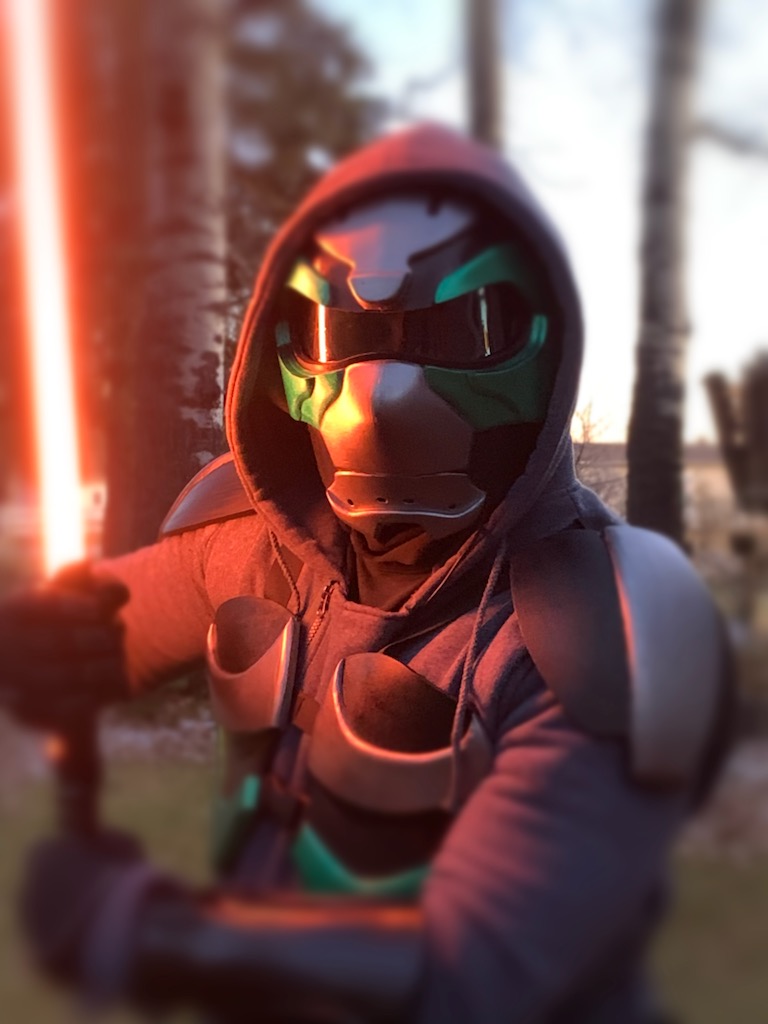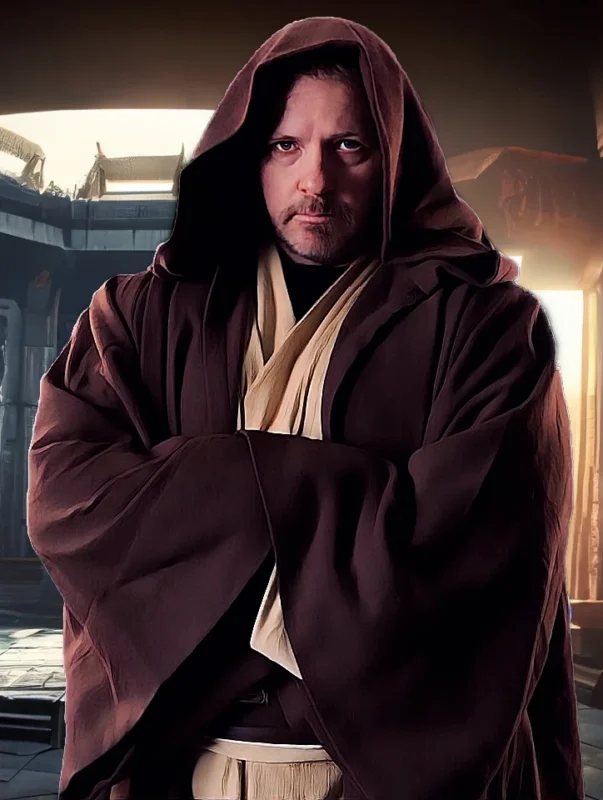WRITTEN CONTENT
This is the gallery of the most recent written projects. Click on the title of the content piece to go to the site of posting if it remains available. Articles are not shown in their entirety as they are for sale documents or linked to where it is published. Email to info@phoenixcontent.ca for any requests for written material. Cost for written work is $0.08 – $0.20 per word depending on the scale and type of the project.
New writing services are now offered. We are able to craft resumes and cover letters, draft wills and affidavits and small legal documents (cannot notarize or finalize). These documents are completed by a certified Legal Assistant. These will be billed on a per job flat rate.
Proof is in the Pudding…
Here is an example of both writing and editing. The first draft is on the left, the completed article on the right.
Before
After
What is a Lightsaber?
OBi-Wan provided us with the most impressionistic characterization of the lightsaber when he passed on Anakin’s saber to Luke in Episode IV: A New Hope.
“An elegant weapon for a more civilized age.”
The perfect image brought to mind the instant he said it was of honour, respect and yet simplicity, balance and power. If you will, a force to be reckoned with. It can cut through almost anything with ease, deflect blaster fire, be thrown at opponents and retrieved at a whim, and still provide light in dark places, or boil water to clean wounds. Force and balance… But to the skilled user, it becomes an extension of oneself, a center of soul and determination and a dance of block and parry without the reckless fumbling of blasters or the careless swinging of simpler objects. Kenobi’s description left us with the impression that these weapons were wielded by a society of those who believed honour ruled above all, aggression was not the answer. To hold such a thing so powerful with such restraint was not only to master the weapon, but to master oneself.
A thousand generations of honing a skill and perfecting this tool, few can not take notice when a lightsaber is ignited in a room. But there is more to this thing than a metal shaft and focused beam of energy. There is purpose and there is story in almost every design. Again, Obi-Wan said it best when he told Anakin, “This weapon is your life.” in Episode II: Attack of the Clones. Anakin’s first saber was the embodiment of his style, solid, simple and calibrated for maximum force. Aspects he mirrored in his final design.
Throughout the Initiate’s training the lightsaber was introduced very early on and as the skills grew, the Initiate set out to construct their own saber as a ritualistic passing of right to prove their knowledge and connection to the Force. Here was where we saw the life and characteristics of the user flow into the design of the hilt. Herein is the reason why some hilts are made of metal, some of wood, some of rock and some of bone. Some are intricate, some are as simple as can be but all are born as an extension of its builder. The Jedi knows every part – the grip, the pommel, the switch, the emitter, the power source and the Kyber crystal that gives the saber its energy. Know the weapon, know thyself.
This fact is largely prevalent in Ahsoka Tano. Her style became very unique as she preferred to carry two sabers, one longer that she used in a reversed grip and a shorter one used traditionally. She used them as per her combat style to great effect as she grew to be an extremely formidable Force user in her time. I say Force user and not Jedi as anyone who follows the storylines knows that she severs her connection to the Order and can no longer hold the rank of Jedi. This is the reason she had two sets of sabers, each set designed for specific reasons.
Her first set paid homage to the two masters who took active roles in her training. Although she was Anakin’s padawan, Obi-Wan extended much of his knowledge that guided her. Her hilts so then became a combination of the two. The emitter end became a reflection of Anakin, the hilt a reflection of Kenobi. After she left the Order, she left those sabers behind and emerged years later with new ones sporting a curved, flatter design unlike either of her mentors. This katana style was to characterize a maturity in her style and look and even the blade colour went from the original green to white to signify that she retained no connection to any order or affiliation.
Viewing lightsabers in this aspect allows us to see them not just as glorified weapons of pure esthetic destruction but as a harmonious extension of the user and their connection to it. Though what our modern technology has allowed us to wield today – as awe inspiring as they are – is far from what a lightsaber truly is, it is likely in our better interests to not have them readily available as they were designed to be. It is easy to see why only a Force user is able to use one to its full potential as the slightest error in coordination would result in serious injury or loss of limb. Anyone who owns a saber such as those found at OB-1 Sabers’ store will attest to this statement.
It is in the belief of the fantasy that we hold dearest. The knowledge that there can be strong connections between us and the Jedi and we crave the desire to wield and master such an amazing, iconic and futuristic rendition of a thing we are so familiar with from our history. I have seen it again and again, the look on the faces of those who have ignited one, heard the sound, watched the light scroll up the blade and I will admit, felt it myself when I got my first lightsaber. At that moment I stepped out of my bounds of normalcy, I joined an Order from a time long ago in a galaxy far, far away. At that moment, I became a Jedi.
The Lightsaber Connection
Ben Kenobi, formally Obi-Wan Kenobi, provided us with the most impressionistic characterization of the lightsaber when he passed on Anakin’s hilt to Luke in Episode IV: A New Hope, “An elegant weapon for a more civilized age.”
To the skilled user, it becomes an extension of oneself. A focal point of soul and determination culminating in a dance of block and parry without the reckless fumbling of blasters or the careless swinging of primitive objects.
Both a Tool and a Weapon
It can cut through almost anything with ease, deflect blaster fire, be thrown at opponents and retrieved at a whim, and still provide light in dark places, or boil water to clean wounds.
Viewing lightsabers in this aspect allows us to see them not just as glorified weapons of pure esthetic destruction but as a harmonious extension of the user and their connection to it. Even the Samurai from our history, understood the katana was as much a part of the wielder as his own hand. The Samurai knows his hand to the tips of his fingers, he feels them and knows where they end. With sword in hand, this connection extends to the tip of the blade, to feel where it is at all times.
Force and Balance
Again, Obi-Wan said it best when he told Anakin, “This weapon is your life,” in Episode II: Attack of the Clones.
The sensations felt the instant he said it was of honour, respect, yet simplicity, balance, and power. If you will – a force to be reckoned with. The statement perfectly mimics the ancient Samurai and their connection to their swords.
Kenobi’s description left us with the impression that these weapons were wielded by a society of those who believed honour ruled above all. To hold such a thing so powerful with such restraint was not only to master the weapon, but to master oneself. Aggression was not to be nurtured and would lead to a dark path of hate and destruction.
A thousand generations of honing a skill and perfecting this tool, few would not take notice when a lightsaber is ignited in a room. But there is more to this thing than a metal shaft and focused beam of plasma.
Purpose and Story in Every Design
Younglings were only provided with training sabers, non-lethal versions to begin building their skills. It was not until the Initiate’s skill became sufficient for them to build their own. The Initiate would embark to planets, like Ilum, to retrieve their own kyber crystal – the focusing energy point that creates the blade and its colour, and the connection between user and weapon. This journey was a ritualistic passage of right to prove their knowledge and connection to the Force, as the crystal could only be found through the Force.
With a fresh crystal in hand, the Initiate would be provided with the tools needed to construct the hilt – which also had to be completed using force abilities. During this process, the life and characteristics of the user flowed into its design. It is the reason why some hilts are made of metal, some wood, some rock, and some bone. Some are intricate, some are as simple as can be, but all are born as an extension of its builder.
The Jedi knows every part of their saber – the grip, the pommel, the switch, the emitter, the power source and the kyber crystal. Know the weapon, know thyself.
This fact is prevalent in Ahsoka Tano. Her style became unique as she preferred to carry two sabers, one longer that she used in a reversed grip and a shorter one she wielded traditionally.
Her first set paid homage to the two masters who took active roles in her training. Although she was Anakin’s padawan, Obi-Wan extended much of his knowledge that guided her throughout the Clone Wars. Her hilts then became a combination of the two. The emitter became a reflection of Anakin; the pommel, a reflection of Kenobi.
She used them with her chosen combat style to great effect as she grew to be an extremely formidable Padawan in her time. She was never a Jedi though, as anyone who follows the storylines knows that she severed her connection to the Order and could never hold the rank of Jedi. This is the reason she had two sets of sabers; each set was designed for specific reasons.
After she left the Order, she left her original set behind and emerged years later, as Fulcrum, with new ones sporting a curved, flatter design unlike either of her mentors. This katana style was to characterize a maturity in her style and look and even the blade colour went from the original green to white to signify that she retained no connection to any order or affiliation – only to her sabers.
The Modern Connection
Though what our modern technology has allowed us to enjoy today – as awe inspiring as they are – is far from what a lightsaber truly is, which is likely in our better interests. We humans can hardly be considered force sensitive in the same respect as Jedi.
The skill level and connection to the instrument required takes years to master fully. Not many of us hold the title of Samurai; and many of us who do practice with the FX sabers like those found at OB-1 Sabers’ store surely sport a few bruises as a testament to our efforts. It is easy to see why only a Force user would be able to use a real saber to its full potential as the slightest error in coordination would result in serious injury or loss of limb. Did the Samurai of old experience such growing pains?
It is in the belief of the fantasy that we hold on to. The knowledge that there can be strong connections between us and the Jedi. We crave the desire to wield and master such an amazing, iconic, and futuristic rendition of an elegant weapon we are so familiar with from our history. We want to connect with the image and the ideology of the thing to bring a deeper meaning to our lives.
I am OB-1 Sabers. I have seen it again and again, the look on the faces of those who have ignited one that first time; heard the sound, watched the light scroll up the blade and I will admit, I felt it myself when I got my first lightsaber. At that moment I stepped out of my bounds of normalcy and I joined an Order from a time long ago in a galaxy far, far away. At that moment, I became a Jedi with an elegant weapon hoping for a more civilized age.
The Value of scrivener
One common question from many new writers is asking what platform is best to write with. Unfortunately, there is no single, definitive answer suitable for everybody but there is one that stands out. While MS Office may be great for creating documents, Scrivener is a great tool for creating manuscripts. It is a very complete writing tool for writers of all skill levels and a variety of job types. It provides a ‘living document’ feel to your work that lets you organize, compile, add research media, structure, or just simply write your project. You can even create digital corkboards for digital post-it notes.
It boasts a healthy Toolbar with many options to configure the look and feel of the layout and probably more editing tools than a single user will ever need. But it’s good to know they are there for particular projects depending on your field. Scrivener is not just for authors but also for lawyers, journalists, students, screenwriters and many more. Use format presets like Styles to format individual sections or complete blocks throughout the project. Or import outside documents, research from other apps, web pages, images and sound files – a handy feature for those who brainstorm using voice memos.
The interface reads like an open book. The left panel is the Binder which holds all your chapter folders, research media and background notes on your settings, characters and story. At the very top, there is a Novel Format section that describes the template and how to use it. Below that, you create folders and text pages for your chapters, or however your project is set up. It’s very intuitive, allowing you to reorder your chapters for continuity by simply dragging and dropping the folder. Then there are pre-built folders installed to detail your characters, another to list and describe the places in your story and yet another to hold all other research you may have done to complete your project. Scrivener also has a Front Matter folder which holds templates for Manuscript, Paperback and E-Book formats.
The attractions of mazatlan
When first stepping off the plane in Mazatlan, one would believe this city is on the poor side of a healthy economy. Passengers exit the aircraft by both front and rear doors where the warm climate wraps you like a blanket before you descend a portable staircases and walk the tarmac toward the doors to the airport. Yes, if it rains, you are going to get wet. Walking the halls toward customs, nothing shouts of modernization or new and improved. The air conditioning isn’t cranked either, but that’s okay, many are here for the weather. The customs folks check your passport before ushering you along another hall to baggage claim. There are attendants willing to help you get your bag in the crowded room and a security official walks around occasionally with a dog to sniff your luggage. Then there’s one more check where they x-ray your belongings before you’re off down another short hall that opens into a new land of colour and excitement.
This is the real beginning to your Mazatlan experience. Shops, food and proprietors of transportation await while you make your way through the crowd. Though it’s best to go to the counter to pay the going rate for a reliable taxi to get you to your destination. Once procured, make your way out the front doors and absorb the lush surroundings of palm trees and traffic. It may look like chaos at first but there is a system in place here with experienced people who can help you get to where you need to go.
From your taxi window you will get to see everything Mazatlan is, its old communities and poverty-stricken areas but also its growing city centres and developing business districts. You can look in almost any direction and see revitalization and new construction. Mazatlan is a 500-year-old resort town that boasts the Malecon, a 21-kilometer boardwalk along the beach where you will find many attractions, shops and interesting historic landmarks, traditional and familiar food and always, always something to drink. The Malecon also hosts the annual Carnaval, Mexico’s version of Mardi Gras. Held almost every year since 1898, if you are able to manage the very large attendance records, you will share in the experience of coronations, concerts, art, street parties, parades and fireworks.





